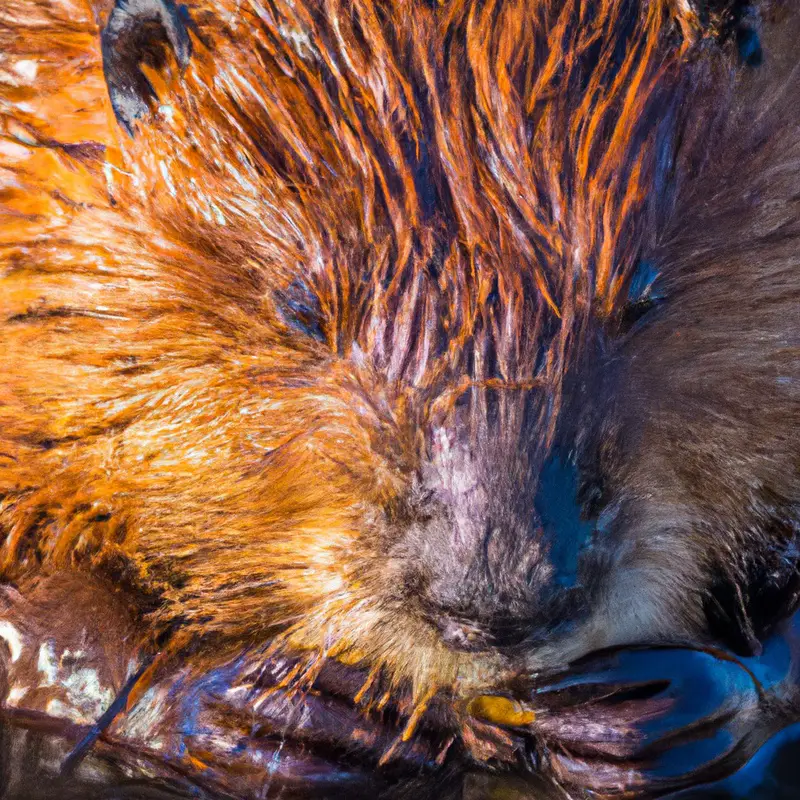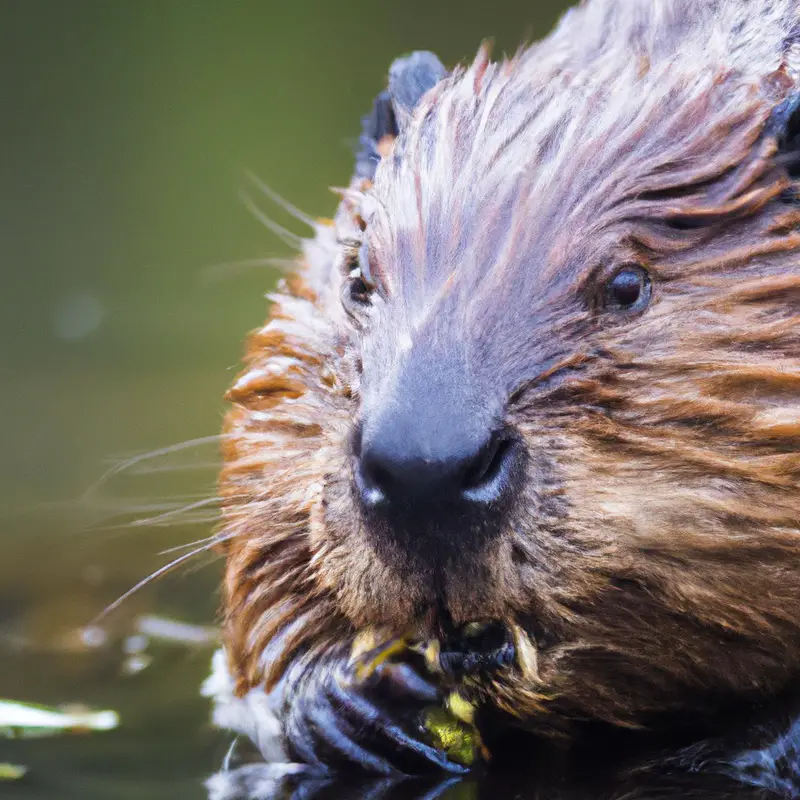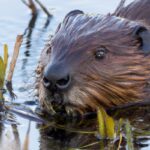Key Takeaways:
- Beaver hunting is legal in Colorado under certain conditions.
- A hunting license is required to legally hunt beaver in Colorado.
- There are specific regulations and restrictions on hunting beaver in Colorado.
- Hunting seasons and bag limits for beaver vary in different parts of Colorado.
Are you ready to embark on an exciting adventure in the rugged wilderness of Colorado? Well, get your gear ready because today we’re diving into the fascinating world of beaver hunting in the beautiful state of Colorado.
As an expert hunter and outdoor enthusiast, I have spent countless hours honing my skills and exploring the vast landscapes that Colorado has to offer.
In this blog article, I will share my knowledge and experiences about why people hunt beavers in Colorado, the regulations and permits you need, preparing for a successful hunt, various techniques and strategies, ethical considerations, and how to process and utilize the meat and fur. So, let’s dive in and uncover the secrets of beaver hunting in Colorado!
Aspect | Pro | Con |
|---|---|---|
Regulation | Helps manage beaver population and maintain ecosystem balance | Requires compliance with specific hunting regulations and licensing |
Conservation | Provides opportunities for sustainable harvest and utilization of beaver resources | Potential impact on local beaver populations and their habitats |
Economic | Boosts local economies through hunting permits and tourism | Can be expensive with associated costs of equipment, transportation, and licenses |
Recreation | Offers outdoor adventure and skill-building for enthusiasts | Can be physically demanding and challenging |
Overview of Beaver Hunting in Colorado
Why People Hunt Beavers in Colorado
People hunt beavers in Colorado for several reasons.
Firstly, beaver fur is highly valued and can be used for making various products.
Additionally, beavers can cause damage to trees and flood agricultural land with their dam-building activities.
By hunting them, people can mitigate these negative impacts.
Moreover, hunting beavers helps regulate their population, preventing overpopulation and maintaining a healthy ecosystem.
Lastly, some hunters enjoy the challenge and excitement of pursuing and harvesting beavers.
Overall, hunting beavers in Colorado serves multiple purposes, including conservation and economic benefits.

Regulations and Permits for Beaver Hunting
Regulations and Permits for Beaver Hunting: To legally hunt beavers in Colorado, you need to follow specific regulations and obtain the necessary permits. The Colorado Parks and Wildlife (CPW) department is responsible for managing hunting activities in the state.
- License: You must have a valid hunting license issued by CPW before you can hunt beavers. Make sure to review and understand all the regulations associated with hunting licenses.
- Season: Beaver hunting is limited to a specific season, typically from November to March. Check the current hunting regulations for the precise dates.
- Bag Limits: There are specific bag limits for beaver hunting. Currently, the limit is set at eight beavers per license year, which runs from April 1 to March 31.
- Methods: CPW allows hunting beavers using both firearms and archery equipment. However, certain methods such as using dogs or traps are prohibited.
- Reporting: After a successful hunt, you must report your harvested beavers to CPW within five days. This information helps in wildlife management efforts.
Remember, it’s important to always stay updated on the regulations and any changes that may occur. It’s a responsibility we all share in preserving and conserving Colorado’s natural resources.

Preparing for a Beaver Hunt
Researching Suitable Hunting Areas in Colorado
When looking for suitable hunting areas in Colorado, you can start by researching the state’s public hunting lands.
The Colorado Parks and Wildlife website is a great resource for finding information on hunting units, season dates, and specific regulations.
Additionally, consider reaching out to local hunting organizations or forums where experienced hunters can provide insights into productive hunting areas.
It’s also essential to familiarize yourself with the terrain and wildlife population in the areas you’re interested in.
Taking the time to thoroughly research and gather as much information as possible will increase your chances of a successful hunting trip.
Understanding Beaver Behavior and Habits
Understanding Beaver Behavior and Habits Beavers are fascinating creatures with unique behaviors and habits. They are primarily nocturnal, meaning they are most active at night.
Beavers are known for their ability to construct dams and lodges, which serve as their homes.
They use their strong, sharp teeth to fell trees and build these structures. Beavers are excellent swimmers and can stay submerged for up to 15 minutes.
They are herbivores, feeding on tree bark, leaves, and aquatic plants.
Beavers are social animals, living in family groups called colonies. Understanding these behaviors and habits can greatly enhance your chances of successfully hunting beavers.

Essential Gear and Equipment for Beaver Hunting
Essential Gear and Equipment for Beaver Hunting To have a successful beaver hunt, you’ll need some essential gear and equipment.
Here’s what you’ll need:
- Firearms: A shotgun or a .22 caliber rifle is typically recommended for beaver hunting. Make sure you comply with local regulations regarding firearms and hunting seasons.
- Ammunition: Pack enough ammunition for the duration of your hunt, considering factors like accuracy and power. Be mindful of regulations on the type of ammunition allowed for certain areas.
- Hunting clothing: Dress for the weather and terrain. Opt for camouflage gear that blends in with the surroundings to avoid being spotted by beavers. Also, wearing waterproof gear is essential for staying dry in wet environments.
- Waders or hip boots: These will keep you dry while traversing wet habitats where beavers are found. Comfortable and durable options are recommended.
- Calls and decoys: Beaver calls are helpful for attracting beavers and inducing them to move closer. Decoys can also assist in attracting their attention.
- Knife and game bag: A sharp knife is crucial for field dressing and processing game. A game bag will hold the beaver carcass without contaminating it.
- Other essentials: Pack essential supplies such as water, food, compass, maps, first-aid kit, and a flashlight with spare batteries.
Remember to always check local hunting regulations and obtain the necessary licenses or permits before embarking on a beaver hunt.
Stay safe and enjoy your hunting experience.
Safety Considerations for Beaver Hunting
When it comes to beaver hunting, safety should be a top priority. Here are some important considerations to keep in mind:
- Proper equipment: Make sure you have the right tools for the job, such as a firearm that is appropriate for hunting beavers. Use optics to enhance your accuracy and always carry a sharp knife for field dressing.
- Protective gear: Wear appropriate clothing and gear to protect yourself from the elements, insects, and potential hazards. This includes wearing high-quality boots, gloves, and a sturdy hat for sun protection.
- Know your surroundings: Familiarize yourself with the area you’ll be hunting in, including the terrain, waterways, and any potential risks like deep water or unstable ground. Stay alert and watch for signs of other wildlife.
- Practice firearm safety: Treat every firearm as if it’s loaded and never point it at anything you don’t intend to shoot. Always keep your finger off the trigger until you’re ready to fire. When hunting in a group, communicate clearly and establish safe shooting zones.
- Be aware of local regulations: Familiarize yourself with the hunting regulations and guidelines specific to the area where you’ll be hunting. This includes understanding bag limits, season dates, and any permits or licenses required.
- Plan for emergencies: Have a first aid kit readily available and know basic first aid procedures. Let someone else know about your hunting plans and establish a communication plan in case of emergencies.
Techniques and Strategies for Beaver Hunting
Setting up Traps and Snares for Beavers
When setting up traps and snares for beavers, there are a few key steps to keep in mind. First, identify active beaver trails near water sources, as that is where you’ll want to place your traps.
Second, choose a suitable trap or snare that is designed to capture beavers safely and effectively.
Next, position the trap or snare in the water, ensuring that the beaver will swim through it. Finally, check your traps regularly and remove any captured beavers promptly to minimize suffering.
Remember to comply with local hunting regulations and seek guidance if needed.
Using Calls and Decoys for Beaver Hunting
Using the right calls and decoys can be effective for beaver hunting.
Calls, such as distress calls or mating calls, can attract beavers to your hunting area.
Decoys, like floating or motion decoys, can create the illusion of other beavers and lure them in.
It’s important to do your research and choose calls and decoys that are specific to beavers and their behaviors.
Experimenting with different calls and decoy setups can help increase your chances of success.
Just remember to adhere to hunting regulations and practice ethical hunting practices.
Spot and Stalk Method for Hunting Beavers
The spot and stalk method is a popular technique for hunting beavers in Colorado.
It involves quietly observing beaver activity and then, once spotted, slowly and stealthily stalking them until within shooting range.
This method requires patience, good observational skills, and the ability to move silently.
It’s important to stay downwind to avoid alerting the beavers and to approach slowly to minimize noise.
Be sure to have a clear shot before taking aim, as beavers can be quick to dive underwater.
Hunting Beavers from a Blind or Tree Stand
When hunting beavers from a blind or tree stand, it’s crucial to choose the right location.
Look for areas near water bodies with signs of beaver activity, such as gnawed trees and dams.
Once your blind or tree stand is set up, patience is key.
Beavers are most active during dawn and dusk, so plan your hunting accordingly.
Using decoys can help attract beavers closer to your position.
Remember to take accurate shots and aim for vital organs.
Always follow local hunting regulations and practice ethical hunting.
Ethical Considerations in Beaver Hunting
The Importance of Conservation and Wildlife Management
Conservation and wildlife management play a vital role in preserving our natural ecosystems and protecting the diverse range of species that inhabit them. It helps maintain healthy populations of wildlife, protects their habitats, and prevents the depletion of natural resources.
Through these practices, we ensure the long-term sustainability of our environment and the well-being of future generations.
Conservation and wildlife management also provide economic benefits, as many communities rely on nature-based tourism and recreation. By valuing and prioritizing conservation efforts, we can safeguard the incredible biodiversity of our planet.
Understanding Legal Limits and Bagging Quotas
Understanding legal limits and bagging quotas is essential when engaging in beaver hunting in Colorado. The legal limits refer to the maximum number of beavers that can be harvested within a given time frame, while the bagging quotas indicate the number of beavers an individual can take during a single hunting trip.
These limits and quotas are put in place to ensure sustainable management and conservation of the beaver population.
It is crucial to familiarize yourself with these regulations and adhere to them to protect the species and the ecosystem it inhabits. Remember to always check for any updates or changes to the legal limits and bagging quotas before embarking on your hunting adventure.
Respect for the Animal and Responsible Harvesting
Respecting the animal and practicing responsible harvesting are essential when hunting beaver. It’s important to acknowledge that these animals are lives, deserving of our care and consideration.
By using ethical hunting methods and respecting regulations, we can minimize suffering and ensure the animals are harvested with respect.
This means aiming for clean, humane kills and properly utilizing the harvested animal so that nothing goes to waste. Responsible harvesting also involves adhering to bag limits and following guidelines set by wildlife management authorities.
By doing so, we can maintain a balance between conservation and hunting.
Processing and Utilizing Beaver Meat and Fur
Skinning and Butchering a Beaver
Skinning and butchering a beaver requires a careful and systematic approach.
Firstly, locate the anus and make a small cut around it, then gently cut along the belly towards the ribs.
Second, open up the belly by making a shallow cut from the inside of each leg.
Third, peel the skin away from the body using a sharp knife and be cautious not to cut through the hide.
Lastly, remove the head, tail, and feet.
Separate the meat into desired cuts and store accordingly.
Remember to handle the beaver carcass with care to ensure a successful process.
Recipes and Cooking Tips for Beaver Meat
When it comes to cooking beaver meat, there are various delicious recipes and cooking tips you can try. Here are some ideas to get you started:
- Slow Cooker Stew: Cut the beaver meat into chunks and place it in a slow cooker with onions, carrots, potatoes, and your favorite seasoning. Cook on low for about 6-8 hours until the meat is tender and flavorful.
- Grilled Beaver Kabobs: Marinate the beaver meat in a mixture of olive oil, garlic, soy sauce, and herbs for a few hours. Thread the marinated meat onto skewers with vegetables like bell peppers, onions, and cherry tomatoes. Grill the kabobs until the meat is cooked through and slightly charred.
- Beaver Burgers: Grind the beaver meat and mix it with breadcrumbs, egg, onion, and spices to make flavorful burgers. Cook them on a grill or stovetop until they reach your desired level of doneness.
- Braised Beaver Ribs: Season the beaver ribs with salt, pepper, and your favorite spices. Brown them in a hot skillet and transfer them to a baking dish. Add your choice of liquid (such as broth, beer, or cider and cover with foil. Braise the ribs in the oven at a low temperature for a few hours until they are tender and falling off the bone.
Remember to handle and cook beaver meat just like any other wild game meat. Proper cooking techniques ensure food safety and enhance the flavor of the meat.
Enjoy experimenting with these recipes, and feel free to add your own personal touch!
Tanning and Using Beaver Fur
Tanning and using beaver fur is a great way to make the most out of your hunting experience.
The first step in tanning beaver fur is to remove the flesh and fat from the hide.
Then, you can use a tanning solution to treat the fur and make it soft and supple.
Once the fur is tanned, you can use it to make various items such as hats, gloves, and blankets.
Beaver fur is warm, durable, and has a unique texture, making it an excellent material for crafting.
So, if you’ve caught a beaver, don’t let the fur go to waste – tan it and enjoy the benefits!
Frequently Asked Questions about Beaver Hunting in Colorado
What is the best time of year to hunt beavers in Colorado?
The best time to hunt beavers in Colorado is during the winter season, specifically from late fall to early spring.
This is because beavers are more active during this time, as they prepare their lodges and dams for the colder months ahead.
The colder temperatures make it easier to spot their activity, such as chewed tree stumps and dam building.
Additionally, the absence of foliage during winter makes it easier to locate them.
Just remember to check and abide by the hunting regulations and obtain the necessary permits before embarking on your hunting expedition.
Can out-of-state hunters hunt beavers in Colorado?
Yes, out-of-state hunters can hunt beavers in Colorado.
The state allows non-residents to obtain hunting licenses and permits for various game species, including beavers.
However, it’s important to familiarize yourself with the specific regulations and requirements set by the Colorado Parks and Wildlife Department.
This includes checking for any special restrictions or limitations, such as bag limits or season dates, that may apply to hunting beavers.
Additionally, it’s always advisable to respect private property rights and obtain permission from landowners before entering their land for hunting purposes.
Are there any restrictions on using firearms for beaver hunting in Colorado?
Are there any restrictions on using firearms for beaver hunting in Colorado? Yes, there are restrictions on using firearms for beaver hunting in Colorado.
You must have a valid hunting license and follow the specific regulations set by the Colorado Parks and Wildlife.
It is important to be aware of the hunting seasons, bag limits, and any additional requirements for using firearms while hunting beavers. Make sure to familiarize yourself with the regulations to ensure a safe and legal hunting experience in Colorado.
Final Verdict
Hunting beavers in Colorado is a popular activity that is both challenging and fulfilling for many hunters. The regulations and permits in place ensure that the activity is carried out responsibly and ethically.
By researching suitable hunting areas, understanding beaver behavior, and equipping oneself with the necessary gear, hunters can increase their chances of a successful hunt.
It is crucial to consider safety and abide by legal limits while hunting. Additionally, responsible harvesting and utilizing the meat and fur of the beaver contribute to sustainable conservation practices.
Hunting beavers in Colorado provides not only a thrilling adventure but also an opportunity to contribute to wildlife management and conservation efforts.









